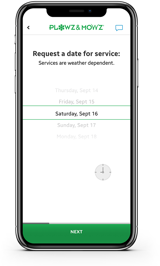Weather-Predicting Woolly Worms
Can a woolly worm predict the upcoming winter? You know the story. Woolly worms (actually, they’re caterpillars that turn into the Isabella tiger moth) have brown and black coloring on the 13 segments of their bodies, a number that corresponds to the 13 weeks of winter. The percentage of segments that are black vs. brown—and where the colors are located—can be used to forecast the winter, says the legend. The prediction is for the entire season, mind you, not just the next 7 days (more on that in a bit).
So, if you find a woolly worm, you should be able to get an idea about how difficult the upcoming winter will be. Black segments mean harsh weather and brown means milder days. The tip is the start of the winter, followed by the brown, and the end of winter’s end. (Woolly worms have six legs and two tiny eyes; you may need to wait till it moves to determine which end is the front.)
Most of us have looked at woolly worms since we were kids to see what to expect for the upcoming winter (as in how many “snow days” we could get)! Unfortunately, we all usually forgot what the woolly worm said and, by the time the season is over, and we had no idea if it was right or not.
Woolly-worm experts—yes, there are such people—claim the fuzzy creatures are correct around 80% of the time. Contrast that to professional weather forecasters with doctoral degrees hanging on their walls who can hit 80% for a seven-day forecast, but their predictions for an entire season are said to be closer to 50%. Way to go, woolly worm!
Now, here are 10 things you may not have known about woolly worms that you can use to impress your friends:
- The woolly worm fur (called setae) forms a natural “antifreeze” to help the creature survive the winter, hibernating under logs, rocks, and such. While the outer body freeze, his inner cells are protected, so in the spring, he morphs into a cocoon and then the beautiful Isabella Tiger Moth butterfly.
- Solid-color caterpillars are not woolly worms. They are a different species.
- There are woolly worm festivals all over the United States. One of the largest is the 45th annual Woolly Worm Festival will be held in Banner Elk, N.C., October 15-16, 2022. If you bring your own woolly worm, you can register him (her?) for the woolly worm races at the festival.
- According to hgic.clemson.edu, in 1948, the curator of insects at the American Museum of Natural History (Dr. C.H. Curran) researched thousands of woolly worms in the Bear Mount State Park in New York and declared that if the woolly worm had more brown segments than black ones, the winter would be mild.
- Woolly worms can survive temperatures as low as -90° F.
- If you touch a woolly worm, it will curl up and play dead (it’s not really dead, so handle it carefully).
- Additional weather-predicting folklore associated with the woolly worm is that the length of the segments on the back predicts the length of the winter (longer equals longer winter) and the direction the worm is traveling matters (north means a milder winter; south means harsher).
- Entomologists (insect experts) say the coloring on the woolly worm is influenced by its age, food, and molting. (Apparently, entomologists have no sense of fun.)
- Woolly worms eat cabbage, spinach, grass, and clover.
- The woolly worm legend about predicting weather has been around since the 1600s.
Posted on November 13, 2021
Order landscaping services for your home online, anytime!
Get a Free Online Quote Now
Leave the yard work to the pros this year, you can browse our services and schedule an appoinment online, anytime !

























